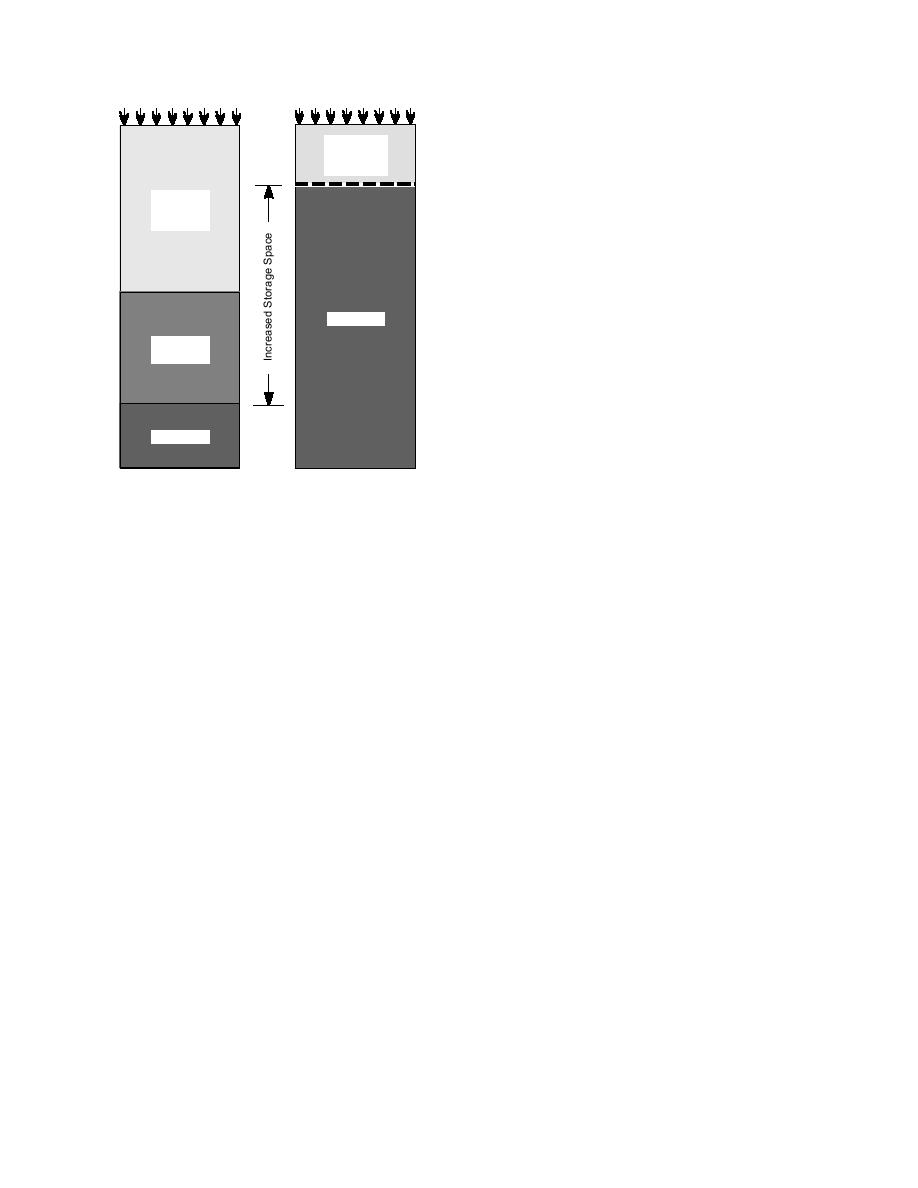
assume that only 1 ft (0.3 m) of cover soil is
needed as the medium in which to grow grass
Vegetative
and any remaining space gained by eliminating
Growth
the frost protection layer can be used to store
Layer
waste material. This means that only 1 ft of pro-
GCL
Frost
tective soil cover is required everywhere. This 1 ft
Protection
of soil thickness could only be used if a shallow-
Layer
rooted grass was the turf cover, and if there was
assurance that burrowing animals would not be a
problem. Our calculations also assume that all of
the space gained by eliminating a compacted clay
layer and using a GCL layer can be used to store
Waste
waste material, the thickness of the GCL being
Clay
insignificant. We assume that the cost of obtain-
Cap
ing, excavating, hauling, placing, and compact-
ing fill for a frost protection layer would cost /
yd3 (/m3). That figure is an average for several
projects at CH2M Hill.
Waste
Value of storage space
The value of the storage space gained by using
a GCL in place of a compacted clay layer was esti-
Figure 15. Increased storage space resulting from the
mated from data published by the National Solid
use of a GCL and the elimination of the frost protection
Wastes Management Association (Repa 1990).
layer.
Table 4 summarizes data taken from this report
Frost Conditions (U.S. Army 1985), which shows
for five studies of landfills with clay or clay
contours of freezing index for the coldest year in
composite cover systems. Only the early devel-
10 years of record or the 90th percentile (Fig. 3-1
opment, construction, closure, after-closure and
and 3-2 in TM 5-818-2). Examination of longer
other costs, such as interest on borrowed money
records of freezing index data showed that using
and profit, are included in this cost estimate. The
a 95th or greater percentile did not result in a sig-
operating costs, which do not add value to the
nificantly greater freezing index.
storage space, are not included. The lower right
The thickness of frost protection required to
corner of Table 4 shows that the average value of
prevent frost from penetrating into the hydraulic
the storage space for the five studies is about /
barrier was determined using the freezing index
ton (/tonne) of waste.
data in a frost depth model developed at CRREL
(Aitken and Berg 1968). We assumed that a silt
Calculation of cost savings
soil would be used as a frost protection layer, that
To calculate the cost savings achieved by using
the density of this layer would be about 110 lb/ft3
a GCL in place of a compacted clay liner, we
(758 kPa), that the water content would be 17%,
assumed the cost of the frost protection layer to be
and that the surface would have a grass cover.
/yd3 (/m3) and the value of the storage
The resulting map showing contours of equal
space to be /ton (/tonne) of waste. The
frost protection layer thickness is given in Figure
density of the waste is assumed to be 40 lb/ft3
16. It can be seen that the range of frost protection
(276 kPa). On an acre-foot basis, the cost of the
required is 16 ft (0.31.8 m) in the U.S., with any-
frost protection then is about ,000/acre-ft
where between 1 and 3 ft (0.3 and 1 m) of frost
(/m3) and the value of the waste fill space is
protection being required over the highly popu-
about ,500/acre-ft (/m3).
lated northern regions of the U.S.
The estimated resulting cost savings are given
in Table 5 for the range of 16 ft (0.31.8 m) of frost
Calculation of potential cost savings
protection. Under the fourth column heading, we
using a GCL liner system
can see that the cost savings attributable to the
Cost of frost protection
reduction in thickness of the protective cover rang-
We have calculated these potential cost savings
es from
||content||
across middle latitudes of America tofor different regions of the U.S. Our calculations
,000/acre (0,000/ha) in the north-central
17



 Previous Page
Previous Page
